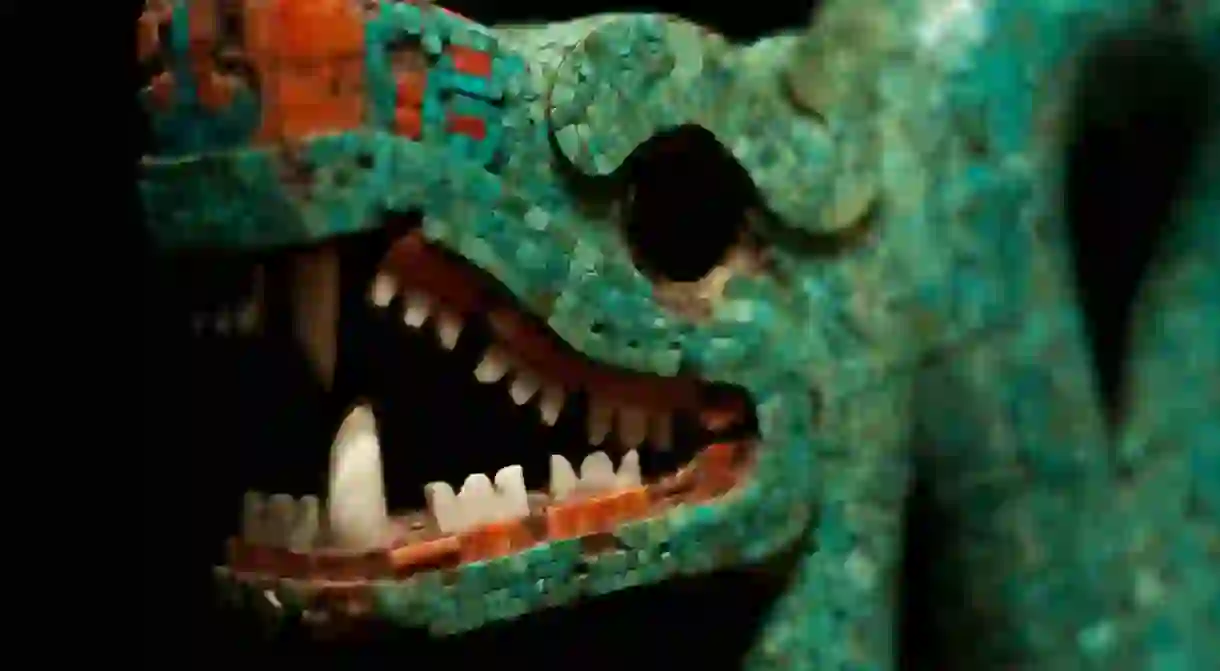10 Surprising Facts You Didn’t Know About the Aztecs

Today, the Aztecs are best known in popular culture for the brutal practice of human sacrifice. Yet the Aztec Empire dominated central Mexico for more than 200 years and used sophisticated technological and engineering techniques. Today, the ruins of the most advanced civilization in the Americas are still scattered across modern Mexico. Here are ten fascinating facts you should know about this empire.
They had an unusual method for deciding where to live
According to legend, the wandering Mexica people chose where to build their city state of Tenochtitlan by looking for an eagle perched on a cactus. The sign was to be the fulfillment of an age-old prophecy. The image did finally appear to them, but in an unlikely place – on a tiny island in the middle of Lake Texcoco. The coat of arms on the modern Mexican flag, which depicts an eagle on a cactus devouring a rattlesnake, is inspired by this legend.

They were not called the Aztecs
The word Aztec was taken up by Europeans in reference to the city of Aztlan, the legendary ancestral home of the Aztec peoples, which historians believe was in the northern part of Mexico. However, the group that is now referred to as the Aztecs were actually called the Mexica, which is the root for the country name of Mexico.
Their capital city was among the most impressive in the world
The city of Tenochtitlan had an estimated population of between 200,000 and 300,000, making it approximately five times the size of London and among the largest cities in the world at the time. Like Venice, Tenochtitlan was a city of canals and was regarded as spectacularly beautiful by the Spanish invaders. Bernal Díaz del Castillo, one of the conquistadores, wrote that the Spanish were left in disbelief when they arrived at the capital. “Some of our soldiers even asked whether the things that we saw were not a dream?” he wrote.

They were big believers in education
The Mexica were one of the first societies to introduce compulsory education for children. Every child in the Mexica Empire was educated, regardless of whether they were nobles, commoners or slaves. Students were taught from the huehuetlatolli, a huge collection of sayings which contained Mexica legends and teachings on behavior.
They loved sports
The Mexica national sport was called Ullamaliztli and was a team sport that used a heavy rubber ball. The object of the game was to smash the ball through a small stone ring. The ball was not allowed to touch the ground, and players hit the ball with their head, elbows, knees and hips.
A tricky game to play, but there were major incentives to perform well. Evidence suggests the team captain was often beheaded if they lost.

They were serious chocoholics
Chocolate originates from Mesoamerica and the Mexica regarded it as a gift from Quetzalcoatl, the god of wisdom. In fact, cacao seeds were so ubiquitous that they were used as a form of currency. Yet chocolate was prepared in a very different way by the Mexica. Cacao seeds were crushed and served as a bitter, frothy drink mixed with spices. After the Spanish took chocolate back to Europe in the 16th century, it was sweetened with sugar and became a popular drink throughout the continent.
They had a very different fashion sense
Evidence suggests that some Mexica would file down their teeth or fit them with precious stones. Women would also stain their teeth dark red with a dye extracted from a parasitic beetle that lives on cactus plants.

They had never seen horses before the Spanish arrived
Before the arrival of the Spanish, horses had never been seen in the New World and the sight of cavalry reportedly had a massive psychological impact on the Mexica. In Díaz del Castillo’s account, he says the Mexica originally mistook the mounted Spaniards as centaurs:
“The Indians, who had never seen any horses before, could not think otherwise than that horse and rider were one body.”
Native people were instrumental to the downfall of the Mexica
The Mexica Empire demanded massive tributes from the subjects it had conquered in Mesoamerica. When the Spanish arrived, many of these native peoples saw an opportunity to cast off the yoke of Mexica rule. As the Spanish made their way inland towards Tenochtitlan, they enlisted the help of native allies who fought alongside them. These troops were a vital part of the campaign against the Mexica Empire.

Most Mexica were actually defeated by disease rather than war
The invading Europeans brought horses and metal swords to the Americas, both of which helped them achieve military successes against the Mexica. Yet they also suffered terrible defeats at the hands of the indigenous soldiers. In fact, the most powerful weapon used by the Spanish was disease. Historians estimate that more than 20 million Mexicans died from illnesses like mumps, measles and smallpox in the five-year period that followed the invasion. Such diseases decimated the Mexica population and made the fall of the empire possible.













